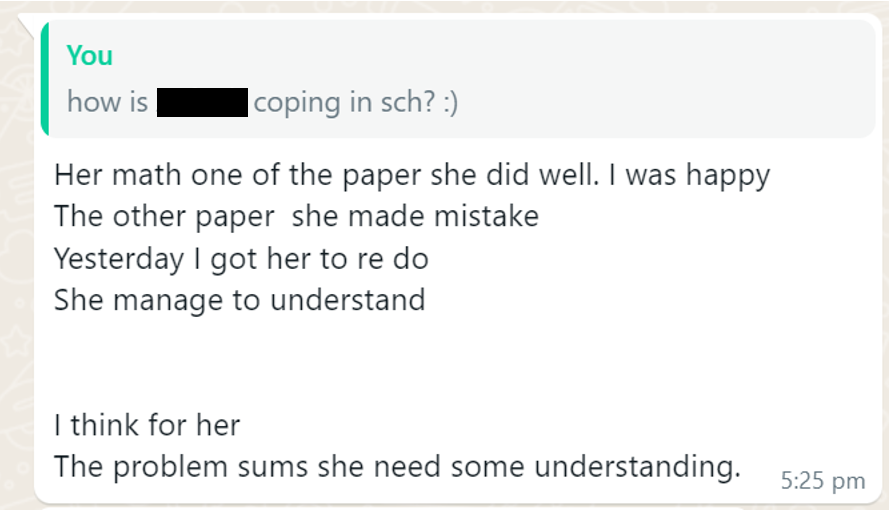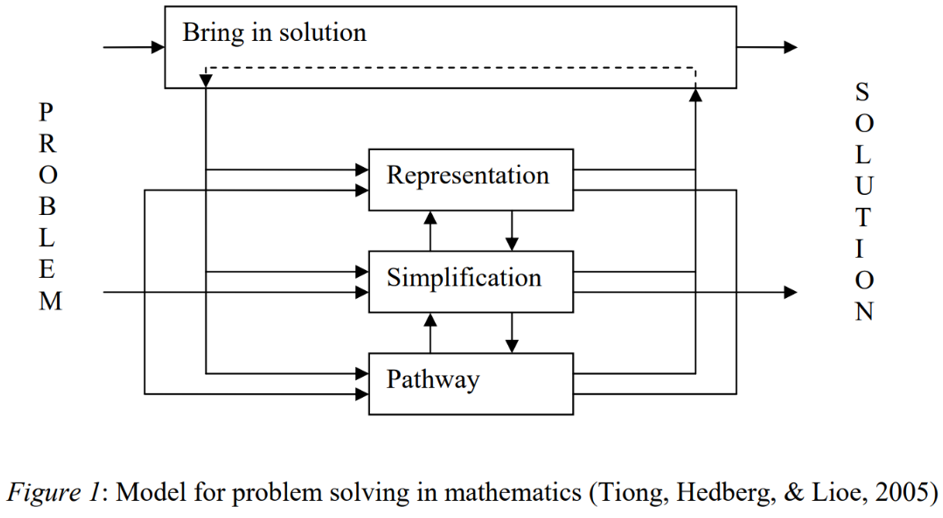From my interaction with parents over the years, I found that while many of them know the word “heuristics”, the majority of them do not know the finer details.
On the other hand, competent educators use it systematically and successfully to help students understand mathematical concepts better, and lay the foundation well for higher levels of mathematics.
Here’s an ecstatic reaction from a parent whose child has gone through a few of our heuristics primary maths classes.

In this post, I am going to share what heuristics are, and an example of how it could be applied at the Primary School Mathematics level.
What Exactly Are Heuristics?
The Singapore mathematics syllabuses, developed by Curriculum Planning and Developing Division (CPDD), Ministry of Education Singapore (MOE), have identified at least eleven heuristics that are applicable to mathematical problem solving at the primary level.
1. Act it out
2. Use a diagram/model
3. Use guess-and-check
4. Make a systematic list
5. Look for patterns
6. Work backwards
7. Use before-after concept
8. Make suppositions
9. Restate the problem in another way
10. Simplify the problem
11. Solve part of the problem
A heuristic is a mental framework that allows children to solve problems by making sound judgement effectively and efficiently. Think well, think far and think fast. With proper training and sufficient practice, every child is capable of doing this. Proper mastery leads to better educational development.
The diagram below shows a simplified model of how heuristics work:

Applying Heuristics to Primary School Mathematics
Instead of explaining everything in words, I shall show how heuristics is applied by using a primary school mathematics question.
Mr Tan had some red pens, blue pens and green pens.
The ratio of the number of red pens to blue pens was 2 : 3 and the ratio of the number of blue pens to green pens was 9 : 7.
After he gave away some green pens and bought 26 blue pens, the total number of blue and green pens decreased by 25%.
In the end, the total number of red pens, blue pens and green pens he had was 576. How many green pens did he give away?
Let’s go through how some of the heuristics may be applied to solving this question.
1st step: use 9th heuristic (restate the problem in another way) to look at the problem in another perspective. Here, we notice that blue has been repeated.

2nd step: In P5 ratio, our children learn about repeated identity. So, we want to make the number of units for blue the same. In this case, it will be 3 x 3 = 9. We choose 9 as it is the lowest common multiple of 3 and 9.

3rd step: As the total number of blue and green pens decreased by 25%, we use their units to transact as they are locked in relative proportion through ratio.

4th step: The number of red pens remained unchanged.
So, 6 units (red) + 12 units (what’s left of blue and green) = 576

5th step: As we equate 18 units with 576, our children can find the base unit, commonly known as the key to unlocking every part of the question.

6th step: We find 4 units = 128 green pens given away, without considering having bought 26 blue pens. Then, we add another 26 to it, as we have to account for the extra part of it, as the giving away of only green pens would need to be balanced out by the purchase of 26 blue pens.

7th step: Our children can conduct a simple backtesting to ensure that the solution checks out.

Here are some other appreciative messages from parents whose children have also benefitted from learning how to apply heuristics sysmatically and successfully in their exams.


I hope you this article was useful to you in showing how heuristics can be applied systematically and successfully.
And if you are interested in how we apply heuristics in other kinds of questions in our primary school mathematics lessons, feel free to contact us for a trial class.